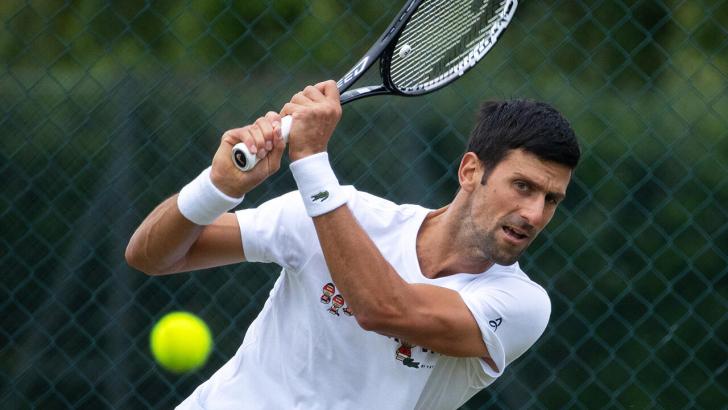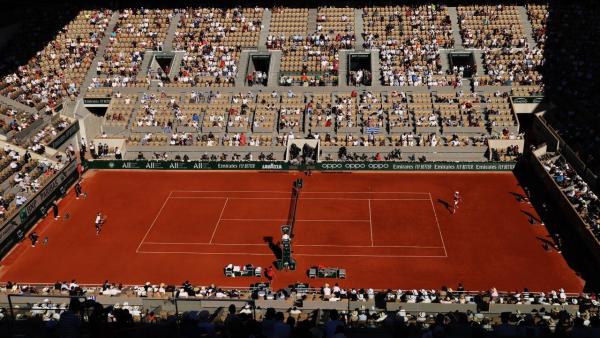French Open Tips: No escape from Alcaraz stats conundrum

Stefanos Tsitsipas looks value. He got to the final last year, and has had the most consistent form on clay in the men's game in the last two seasons.
Back Stefanos Tsitsipas at 7.206/1
The meteoric rise of Carlos Alcaraz is difficult to handle statistically, writes Jack Houghton, and this means the betting value lies elsewhere
The limitations of statistics
Taking a data-led approach to tennis punting is no guarantee of profit. Most obviously, if the data is garbage, your results will be, too.
There are more subtle dangers as well. Data, by its nature, is a view of what has happened in the past. And whilst, in the realm of punting, history usually provides an insightful view of the future, there are circumstances where its power is dented.
For example, I've written in the past about data's difficulty in taking account of the anomalous, extraneous event, like Novak Djokovic's Australian Open saga.
But there are other anomalies that data also struggles to deal with.
The emergence of Alcaraz
Take Carlos Alcaraz, the 3.7011/4-shot for French Open glory.
Once-in-a-while tennis punters, who perhaps bet on the Grand Slams but otherwise don't follow the sport, could be forgiven for not even recognising his name.
Sure, he reached the quarterfinals of the US Open last season and went a few rounds at Roland Garros earlier that year, but if you missed that, it's reasonable to think that the just-turned 19-year-old has emerged from nowhere.
The emergence has certainly been rapid, with Alcaraz the most successful player of the Spring hard- and clay-court season. He reached the final of Indian Wells, and has gone on to win ATP tournaments in Miami, Barcelona, and Madrid. The only wobble was a first-round exit at Monte Carlo.
To set his rise into context, according to my Elo system, Alcaraz is currently the best player in the world, with a rating of over 2,200. In the last decade only Novak Djokovic (3.3512/5), Rafa Nadal (5.905/1), Roger Federer, Kei Nishikori and Andy Murray have posted a higher number. Crucially, all of them broke the 2,200-barrier after winning their first Grand Slam.

An anomaly
Alcaraz is indeed anomalous. Not only is he ridiculously young to be consistently winning top-flight tournaments, but he's secured a top-flight rating without the benefit of winning the very tournaments that typically provide a boost to those ratings.
His arrival into professional tennis couldn't have been more well-timed either. As I've written about before, the men's game has recently been in a statistical slump, with the ratings of the best players in a slow-but-inexorable decline from the glory days when the Big Four could all punch out ratings of 2,300 plus.
And although I don't usually involve myself with such data-less, capricious pronouncements, Alcaraz's playing style - especially his forehand drop-shot - suggests he might have that once-in-a-generation ability to redefine the men's game and dominate it.
A lack of Grand Slam experience
There is a problem, of course, and it's a further problem with using historical data to try and predict the future. Alcaraz may be on a winning streak, but he's yet to win a Grand Slam. He's yet to go two, long weeks of five-set matches. He's yet to feel the pressure of expectation of a global audience. He's yet to serve for the match against a legend of the game to guarantee his own immortality.
For any player, let alone a 19-year-old, those less-concrete aspects of tennis experience are arguably as important as ability when it comes to winning at the very highest level. Crucially, perhaps, they are also the elements of the game not as easily captured by a data-led approach to punting.
This is perhaps a rare instance, then, where the ATP approach to rankings, which judges a player based on the number of points they accrue in tournaments of differing value across a longer period (which has recently fluctuated to take account of the pandemic) provides a more insightful view of Alcaraz's form. He's not won anything really big yet, so they only consider him the sixth-best in the world.
A sceptical view
The tennis fan in me wants Alcaraz to win the French Open, but the gnarly, sceptical punter in me thinks there is no value in his odds, and that his meteoric rise has skewed the betting market.
The recommendation, then, is to keep stakes small and look elsewhere, where the hype is more muted. Stefanos Tsitsipas (7.206/1) therefore looks value. He got to the final last year, and has had the most consistent form on clay in the men's game in the last two seasons.
Recommended bets
GET £50 IN FREE BETS MULTIPLES WHEN YOU SPEND £10 ON THE BETFAIR SPORTSBOOK
New customers only. Bet £10 on the Betfair Sportsbook at odds of min EVS (2.0) and receive £50 in FREE Bet Builders, Accumulators or Multiples to use on any sport. T&Cs apply.
Prices quoted in copy are correct at time of publication but liable to change.

